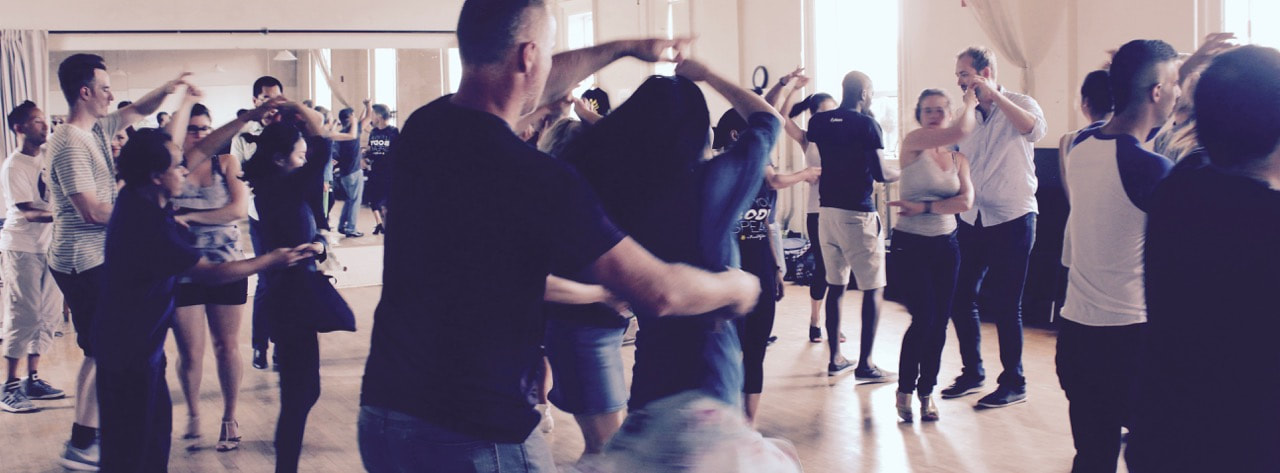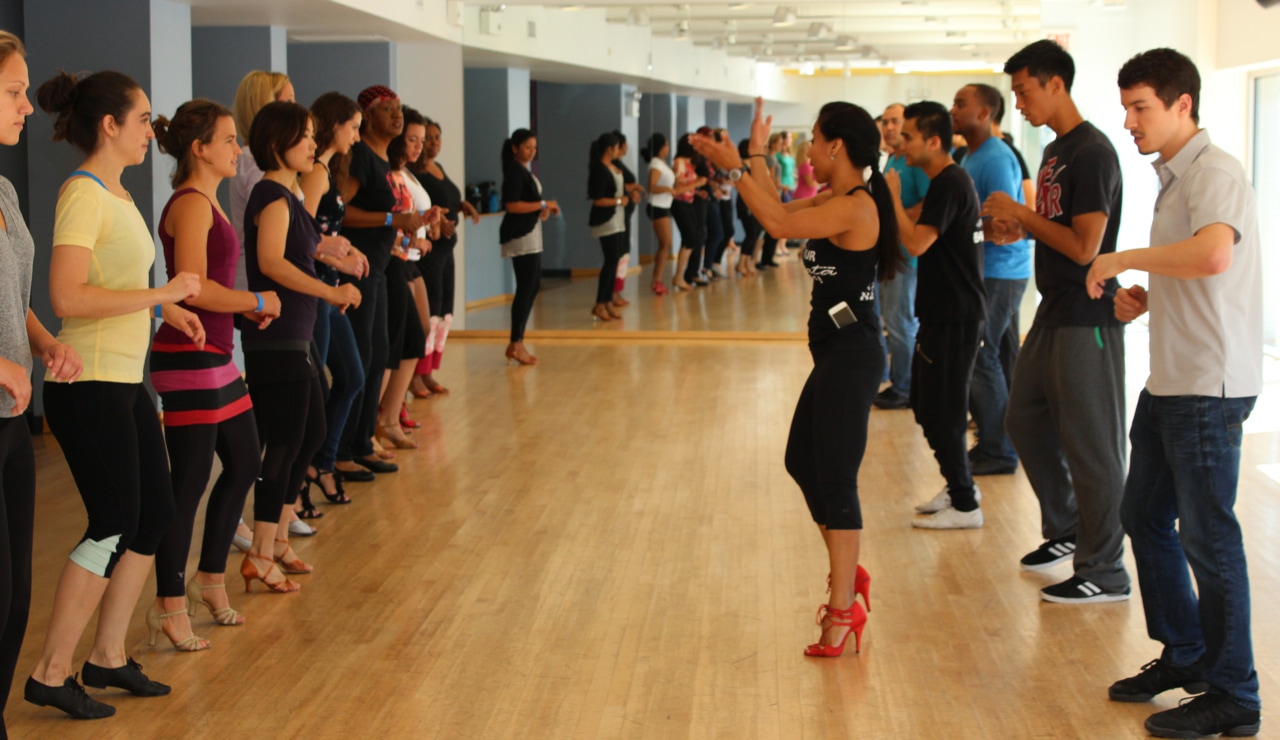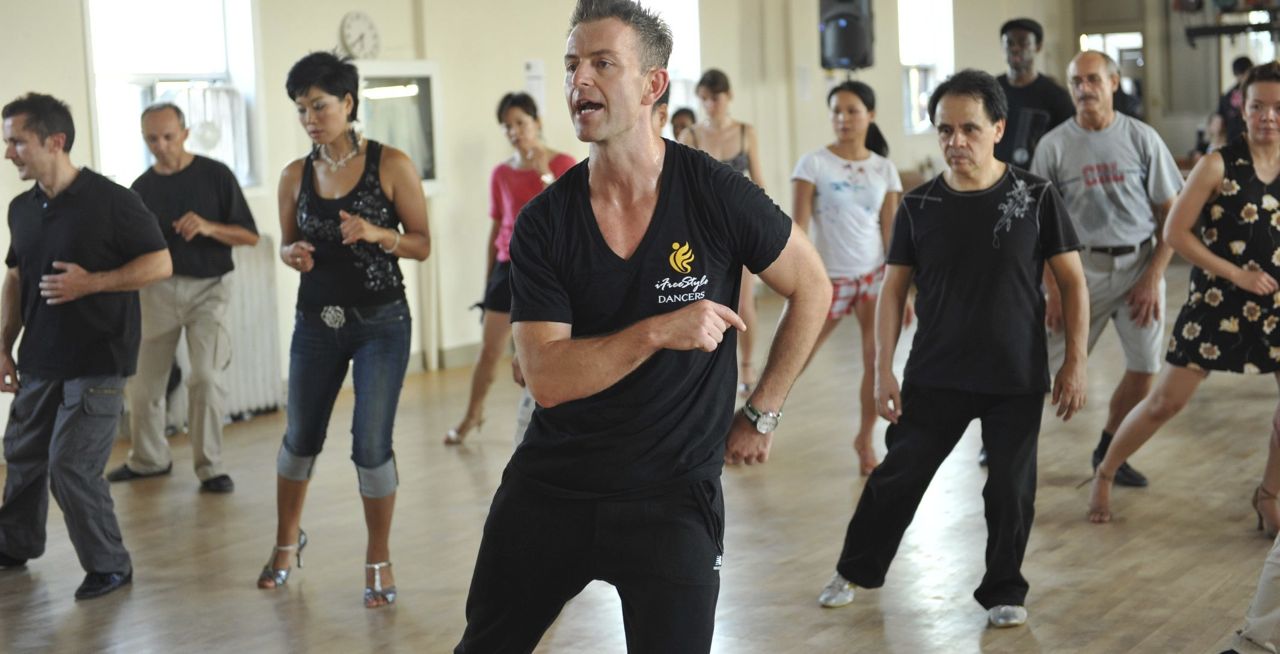|
If you’re a Latin danceaholic, your first few experiences watching two people tear it up on the dance floor probably got you hooked. You might have been enticed by the sensuality, the rawness, the fun, the partner connection, the music, or simply how cool they looked…
While in many Latin countries, locals grow up with the music and culture, most any non-Latin Americans learned to dance outside their home, namely through formal classes. One of the biggest benefits of classes is feedback and practice with different people to prepare you for the social dance floor. Here’s the order of operation: STEP #1 – Take group classes and/or privates to learn how to dance, and get feedback by trusted instructors. STEP #2 – Go out to a social/practice session/club and put those moves into practice. Start to build a level of sensitivity to leading/following others. Adjust, revise, improve. Have fun and meet new people along the way. REPEAT. While Step #1 alone doesn’t typically build great dancers, taking the time to learn basics builds a foundation for great dancing. And getting feedback is extremely valuable if you hope to improve. You’ll find that all levels, even world champions and experienced social dancers have coaches to help them become smoother "movers", more musical, clearer as a lead/follow. Step #2 is the next essential part of a dancer’s progress to greatness. What you learn, must be put into practice. Mistakes will be made, and that’s okay. It’s part of the journey and every dancer will go through it (pretty much forever). This isn’t like Calculus homework. There isn’t “one” right answer. It’s about discovering your voice as a dancer, which is just as unique as you are. First and foremost, remember that Latin dances meant to be danced SOCIALLY. That’s the best part! You'll meet people, create new friendships, laugh, connect and feel a sense of freedom that you’ve never felt before. It takes time and practice to feel the essence of each dance style and to find your voice. There will be bumps along the way but the results will be worth it! Here are 5 ways social dancing can help you becoming a better dancer.
Get yourself social dancing as soon as possible to gain inspiration of what’s to come. Being in an environment where there are others who enjoy dancing too can keep the fuelling your fire for dancing. Feel the vibe of the Latin dance culture and take full advantage of the social nature inherent in Latin dances. Watch, admire, absorb, and enjoy! Watching can be fun, but it’s even more fun to dance! #LetYourBodySpeak (repost from 2014) We live in the era of instant gratification. We want to see results ASAP, right now… yesterday even. We like challenge, but don't let your ego get in the way of your own growth. When it comes to dancing, it’s a bad idea to skip or rush through learning the fundamentals. If you want to know why, READ ON. While the reasons can apply to dances in general, we’ll focus on the Latin street dances – salsa, bachata, cha cha. 5 REASONS WHY INVESTING TIME IN LEARNING THE BASICS IS A GOOD IDEA The basic steps, timing, and technique in dance provide a foundation for EVERYTHING that you’re going to learn going forward. With great fundamentals, you’ll acquire knowledge and skills that can serve as “short cuts” to learning new things. You’ll ALREADY understand and can execute the most elementary skills like timing, lead and following technique, weight transfer so you can focus on what’s NEW.
Stay focused on the goal..."To be a better dancer". Be patient. LEARN YOUR BASICS. Practice your basics. Enjoy the rewards in the long term :) You and your partner will thank you for it! AuthorCaryl Cuizon, iFreeStyle.ca co-founder. Some of you were probably hoping that this wouldn’t be on the list of “HOW TO A BETTER DANCER”. Pero si, it’s definitely on the list. Some of the most admired Latin dancers in the world can throw down and burn the floor with funky, sexy, playful and always musical footwork (otherwise known as "shines" in salsa and cha cha). Needless to say, their talents go beyond just turn patterns. While partner connection is the essence of the Latin dances, evolution has brought other elements that allow for individual freedom of expression. If you’re thinking “I hate shines!”, you’re missing out on a great opportunity to step up your game, have more fun, and become a more well-rounded dancer! Coming from an urban dance background, “solo” dancing not only taught me HOW to move, but also WHEN to move, and have the confidence to go for it! So naturally, coming into the Latin dance scene, it wasn’t as scary to learn footwork. But for the millions of people whose first ever dance steps were to Acid (which I still love by the way) or some super slow salsa/cha cha/bachata, dancing on their own isn’t what they signed up for. And for as long as possible, they avoid doing it AT ALL COSTS. Eventually though, it creeps up on you... eventually you'll encounter some really awesome dancers who enjoy a balance of partner work AND time to shine on their own. By the way "on your own" doesn't mean you forget about your partner! On the contrary, it's an opportunity to groove together without actually holding onto each other. You have both hands available, you can move around each other freely, you can play with hair, jackets, arms, legs, drops... when you can both connect to each other AND the music without a physical lead/follow, it can feel pretty awesome :) TOP 5 REASONS PEOPLE AVOID SHINES
8 Ways Foot work/Shines (“solo dancing”) can help you improve your dancing
AuthorCaryl Cuizon, iFreeStyle.ca Co-founder.
|
AuthorVarious authors including Caryl Cuizon, co-founder of iFreeStyle.ca Latin Dance Company. Archives
December 2021
Categories
All
|
Connect with us!Call or text (416) 669-1385
|
|





 RSS Feed
RSS Feed